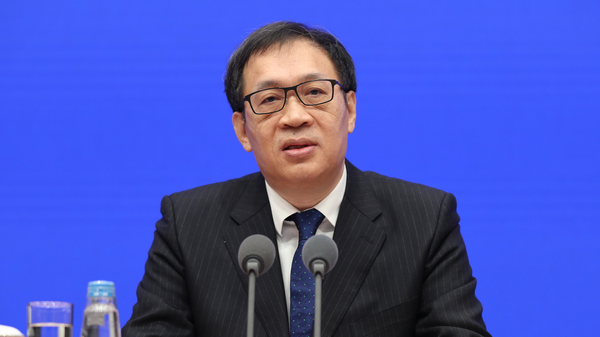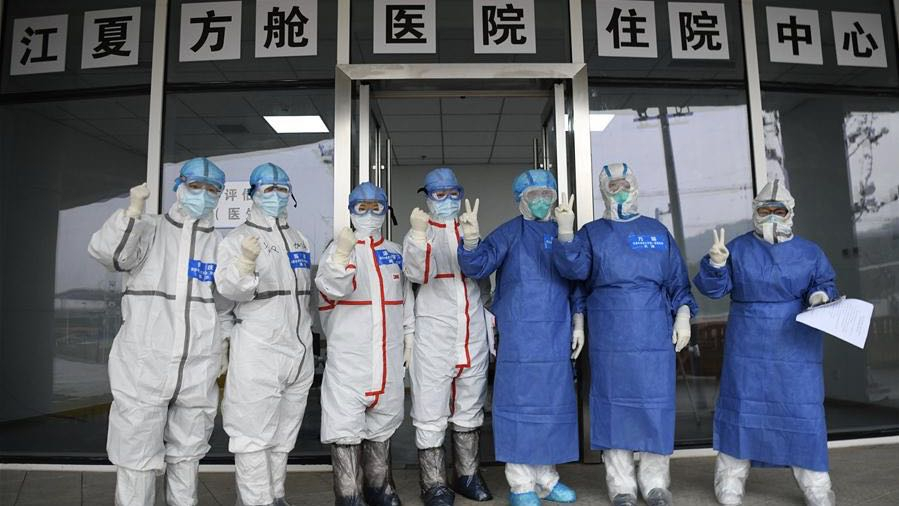China's central bank has allocated 4 billion yuan (572 million U.S. dollars) in new banknotes to central China's Wuhan, said Fan Yifei, Deputy Governor of the People's Bank of China (PBOC) in a press conference on Saturday.
The move aims to increase cash supply to key epidemic prevention and control units, such as hospitals, said the senior official, adding that the central bank has allocated 600 billion yuan in new banknotes to the whole country.
Due to the fast spread of the novel coronavirus pneumonia, which has infected more than 66,000 and killed over 1,500 people as of Saturday, the central bank requires all banks to sterilize cash in circulation and has suspended inter-provincial transfers and transfer within the provinces where the epidemic is severe.
"Cash received must be disinfected before being available to customers," Fan said, explaining that ultraviolet disinfection was adopted in areas hit hard by the COVID-19, and the cash needs to be on hold for 14 days after cleaning.

Fan Yifei, Deputy Governor of the People's Bank of China, speaks at a press conference in Beijing, February 15, 2020. /SCIO Photo
Fan Yifei, Deputy Governor of the People's Bank of China, speaks at a press conference in Beijing, February 15, 2020. /SCIO Photo
Prudent monetary policy won't change
China will maintain its prudent monetary policy, Fan said, at a time people are worried about the economic impact of the COVID-19 outbreak.
"Consumer prices are unlikely to rise sharply," Fan told the press.
"We will support qualified firms so that they can resume work and production as soon as possible, helping maintain stable operations of the economy and minimizing the epidemic's impact," the senior official said.
Fan added that bad loaning is manageable since the non-performing loan ratio in China remained relatively low and there is space to deal with them.
Moreover, the country's lenders will tolerate higher levels of bad loans, said Liang Tao, vice-chairman of the China Banking and Insurance Regulatory Commission (CBIRC).
Xuan Changneng, deputy director of State Administration of Foreign Exchange, said China was expected to maintain a small current account surplus and keep a basic balance in international payments.
China has the ability to maintain a basic equilibrium in international payment as the impact of the virus outbreak is short-lived and limited, he said.

Medical workers pose for a group photo at Jiangxia temporary hospital in Wuhan, capital city of central China's Hubei Province, February 14, 2020. /Xinhua Photo
Medical workers pose for a group photo at Jiangxia temporary hospital in Wuhan, capital city of central China's Hubei Province, February 14, 2020. /Xinhua Photo
537 billion yuan in credit support
China's banking financial institutions already offered more than 537 billion yuan in credit support, as of Friday noon, aimed at helping companies restore production to confront COVID-19, said Liang.
Liang told the press that differentiated preferential financial credit support have been offered to enterprises and also strengthen in virus-affected areas. He also guaranteed lending for key investment projects will be sped up.
Subsidy funds of 8 billion yuan set aside
China's Ministry of Finance said that as of February 14, it has set aside a second batch of subsidy funds worth 8 billion yuan for prevention and control of the epidemic for all provinces. Hubei Province has been allocated 3.5 billion yuan from the funds.
As of February 14, finance departments at all levels of government have issued 90.15 billion yuan in subsidies for prevention and control of the outbreak, among which 25.29 billion yuan was issued by the central Finance Ministry.
A-share market back to normal
"The A-share market has withstood the impact of the epidemic, now it has returned to normal operation," Yan Qingmin, Vice Chairman of the China Securities Regulatory Commission said at the press conference.
China's stock market saw an eight percent drop on February 3, the first trading day after the extended Chinese New Year holiday. But as of Friday it has gained more than five percent after nine trading days.
The market's self-regulation function has been effectively exerted, said Yan, praising coordination among various departments.